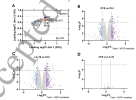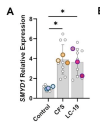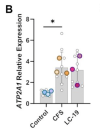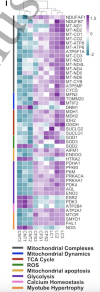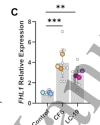Metabolic adaptation and fragility in healthy 3-D in vitro skeletal muscle tissues exposed to Chronic Fatigue Syndrome and Long COVID-19 sera.
Myalgic Encephalomyelitis/Chronic Fatigue Syndrome (ME/CFS) and Long COVID-19 (LC-19) are complex conditions with no diagnostic markers or consensus on disease progression. Despite extensive research, no in vitro model exists to study skeletal muscle wasting, peripheral fatigue, or potential therapies.
We developed 3D in vitro skeletal muscle tissues to map muscle adaptations to patient sera over time. Short exposures (48 hours) to patient sera led to a significant reduction in muscle contractile strength. Transcriptomic analysis revealed the upregulation of glycolytic enzymes, disturbances in calcium homeostasis, hypertrophy, and mitochondrial hyperfusion. Structural analyses confirmed myotube hypertrophy and elevated mitochondrial oxygen consumption in ME/CFS. While muscles initially adapted by increasing glycolysis, prolonged exposure (96–144 hours) caused muscle fragility and fatigue, with mitochondria fragmenting into a toroidal conformation.
We propose that skeletal muscle tissue in ME/CFS and Long COVID-19 progresses through a hypermetabolic state, leading to severe muscular and mitochondrial deterioration. This is the first study to suggest such transient metabolic adaptation.
Web | PDF | Biofabrication | Open Access
Sheeza Mughal; Félix Andújar-Sánchez; Maria Sabater-Arcis; Glória Garrabou; Joaquim Fernández-Solà; Jose Alegre-Martin; Ramon Sanmartin Sentañes; Jesus Castro-Marrero; Anna Esteve-Codina; Eloi Casals; Juan M Fernández-Costa; Javier Ramón-Azcón
Myalgic Encephalomyelitis/Chronic Fatigue Syndrome (ME/CFS) and Long COVID-19 (LC-19) are complex conditions with no diagnostic markers or consensus on disease progression. Despite extensive research, no in vitro model exists to study skeletal muscle wasting, peripheral fatigue, or potential therapies.
We developed 3D in vitro skeletal muscle tissues to map muscle adaptations to patient sera over time. Short exposures (48 hours) to patient sera led to a significant reduction in muscle contractile strength. Transcriptomic analysis revealed the upregulation of glycolytic enzymes, disturbances in calcium homeostasis, hypertrophy, and mitochondrial hyperfusion. Structural analyses confirmed myotube hypertrophy and elevated mitochondrial oxygen consumption in ME/CFS. While muscles initially adapted by increasing glycolysis, prolonged exposure (96–144 hours) caused muscle fragility and fatigue, with mitochondria fragmenting into a toroidal conformation.
We propose that skeletal muscle tissue in ME/CFS and Long COVID-19 progresses through a hypermetabolic state, leading to severe muscular and mitochondrial deterioration. This is the first study to suggest such transient metabolic adaptation.
Web | PDF | Biofabrication | Open Access


